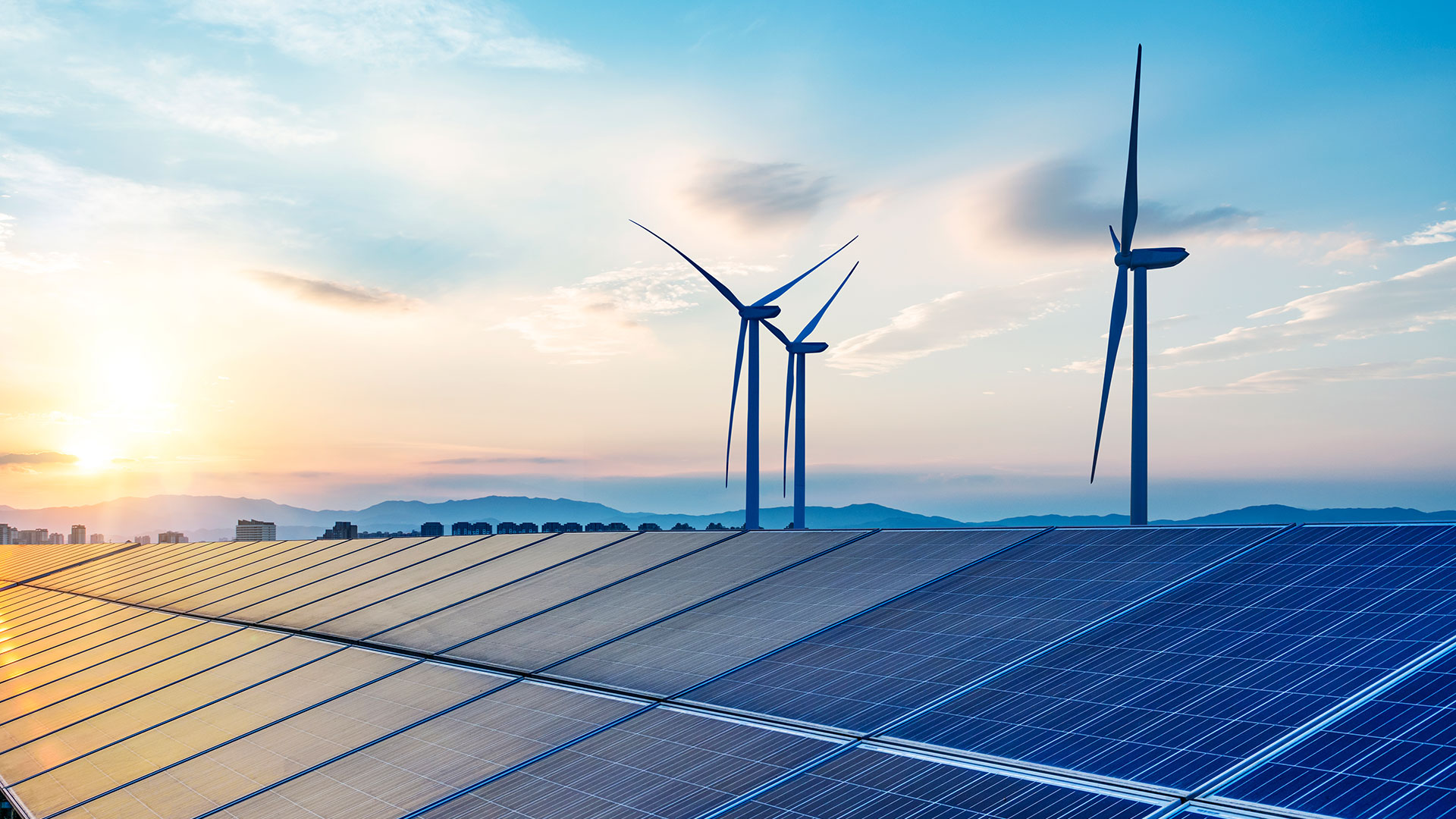How is Germany transforming its energy system?
Germany is in the process of transforming its energy system away from fossil fuels. Initially focused on transforming the power sector, the German Energiewende now targets all sectors in an integrated way, through renewables-based electrification.

Return Button
Transforming Germany’s energy system from fossil fuels and nuclear power to renewables
To reach climate neutrality by 2045, Germany aims to phase out fossil fuels from its energy mix, accelerate renewable energy deployment and reduce overall energy consumption. In 2024, renewable energy accounted for 20% of primary energy consumption.1 This figure, while substantial, also shows that the transformation needs to happen significantly faster.
The transformation of the power sector – responsible for 31% of all greenhouse gas emissions in 2000 – has been at the core of the Energiewende. Most progress to date has been in this sector, with the renewables share in power consumption increasing from 3% in 1990 to 55% in 2024. The transition must now accelerate in the other sectors, particularly in buildings, transport and industry. With the completion of the nuclear phase-out in 2023, there is now even greater emphasis on expanding renewable energy. At the same time, electricity is becoming a cornerstone of the energy system transformation. The share of electricity in total energy consumption is indeed growing, as it becomes more widely used in many applications, including road passenger transport, low-and medium temperature heating, cooling and water heating, where the use of renewable electricity has proven to be the most efficient way to decarbonise.
Renewable energy and energy storage along with renewables-based (“green”) hydrogen – whether produced locally or imported – are expected to play a significant role in achieving net-zero emissions in Germany. Green hydrogen is particularly important for sectors that are difficult to electrify, such as shipping and certain industrial sectors like steel, as well as for use as a feedstock in industrial processes, especially in the chemicals industry (see: Green Hydrogen).
Finally, an often overlooked yet central pillar of Germany’s Energiewende is advancements in energy efficiency, which is essential for a successful transition. Efficient use of electricity, heat and fuels simultaneously reduces overall energy consumption, greenhouse gas emissions and energy bills. Since 1990, Germany’s primary energy demand has declined by 20% even as GDP has grown by roughly 50%. Alongside an increase in electrification of end-use sectors, Germany’s current energy scenarios up to 2030 anticipate both continued primary energy demand reduction,2 driven by increasing energy efficiency in households, buildings and industry, and a transition away from primary fuels like coal, lignite and gas in energy-intensive combustion-based power production and heating supply.
In 2024, GHG emissions dropped to 656 million tonnes of carbon dioxide equivalents (MtCO2eq), 48% below 1990 levels. Cuts in energy and industry emissions were mainly driven by an increase in the use of renewable electricity, reduced energy-intensive production and lower electricity and gas consumption. However, transport and buildings emissions stagnated. A climate protection programme (Klimaschutzprogramm) will be crucial for the 2025-2029 legislature to stay on track.
Coordinating governmental bodies
The German Federal Ministry for Economic Affairs and Energy (Bundesministerium für Wirtschaft und Energie, or BMWE), formerly the Ministry for Economic Affairs and Climate Action (Bundesministerium für Wirtschaft und Klimaschutz, or BMWK), plays a central role in steering the energy transition. It oversees key areas, including the electricity sector, heating, hydrogen, energy efficiency and industrial policy. Consolidating these responsibilities within one ministry is intended to improve coordination, resolving previous inefficiencies resulting from the split of responsibility for renewables and fossil fuels across two ministries. The German Federal Network Agency (Bundesnetzagentur, or BNetzA) is the central infrastructure authority and regulator for the electricity and gas network, setting the framework conditions for fair competition. It is responsible for regulating grids, running auctions for renewables and supervising security of supply.
Effective energy transition governance requires coordination with other ministries, including:
- the German Federal Ministry for the Environment, Climate Action, Nature Conservation, Nuclear Safety and Consumer Protection (BMUKN), responsible for environmental policy, climate action and nuclear safety;
- the German Federal Ministry of Food and Agriculture (BMEL), responsible for bioenergy;
- the German Federal Ministry for Digital and Transport (BMDV), responsible for e-mobility and other mobility policy issues;
- the German Federal Ministry for Housing, Urban Development and Building (BMWSB), responsible for buildings; and
- the German Federal Ministry for Finance (BMF), responsible for providing finance for support programmes and policies.
Coordination is guided by the Federal Chancellery and also takes place indirectly via targets and institutionalised monitoring and reporting.
What are the origins of the Energiewende?
Last revision on .
